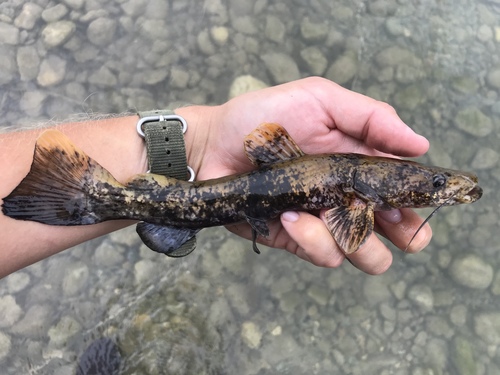
Flathead Catfish
The Bluefin Tuna, a highly migratory species, is one of the ocean's most remarkable predators. Known for their impressive size, speed, and endurance, these fish are a critical part of marine ecosystems. They are also highly prized in culinary circles, leading to significant commercial interest and conservation challenges.
5 28 years
Lifespan
155 cm
Length
Least Concern
Conservation Status
15 km/h
Swimming speed
Carnivorous, Scavengers
Diet
Local Migration
Migration
Appearance Overview
The Bluefin Tuna is renowned for its large, streamlined body, built for speed and endurance in the water.
Color
Dark metallic blue on top with a silvery underside
Body Shape
Torpedo-like, with a crescent-shaped tail
Fins
Two dorsal fins, the first depressible; small finlets run down the back and belly to the tail
Length
Up to 13 feet (4 meters)
Weight
Up to 2,000 lbs (907 kg)
Diet
Carnivorous, feeding on a variety of fish, squid, eels, and crustaceans.
Feeding Behavior
Highly active predators, they use their speed and agility to hunt. Bluefin tuna often hunt cooperatively, herding and trapping prey.
Social Behavior
Typically forms large schools, especially during migration, but can also be found in smaller groups or solitary.
Commercial Relevance
Extremely high value, particularly in sushi and sashimi markets, where its fatty flesh is considered a delicacy.
Conservation measures
International fishing quotas, catch limits, and monitoring programs. Efforts also include sustainable aquaculture practices.
Status
Varies by species: Atlantic Bluefin (Endangered), Pacific Bluefin (Vulnerable), Southern Bluefin (Critically Endangered).
Threats
Overfishing driven by high demand, illegal fishing, and bycatch in other fisheries. Climate change also poses a threat.
Habitat Distribution
Depth Range
Primarily found in surface to mid-waters, typically from 0-1,000 meters, but can dive deeper.
Geographic Range
Atlantic, Pacific, and Southern Oceans; Mediterranean Sea.
Preferred Environment
Temperate and subtropical waters; highly migratory, often crossing entire oceans.
Reproduction and Life Cycle
Breeding Habits
Spawns in specific areas like the Gulf of Mexico and the Mediterranean Sea, with spawning often tied to water temperature.
Development Stages
Eggs hatch into larvae, which develop rapidly. Juveniles grow quickly, reaching significant size within the first few years.
Fecundity
Highly fecund; a single female can produce tens of millions of eggs per spawning season.
Maturity Age
Varies by species; Atlantic Bluefin typically mature between 4-8 years.
Faqs about Flathead Catfish
How fast can Bluefin Tuna swim?
Bluefin tuna are among the fastest fish in the ocean, capable of short bursts of speed up to 43 mph (70 km/h).
What is the lifespan of a Bluefin Tuna?
Bluefin tuna can live up to 40 years, though this varies by species and environmental conditions.
Is it legal to fish for Bluefin Tuna?
Yes, but it is subject to strict regulations due to overfishing. Consumers should look for sustainably sourced options.
How can you identify a Bluefin Tuna?
Their large size, distinctive coloration, and fin structure are key identifiers.
Can Bluefin Tuna be farmed?
Farming Bluefin tuna is challenging due to their migratory nature and specific dietary needs, but some success has been achieved in aquaculture.
Copyright @ Nature Style Limited. All Rights Reserved.
 English
English